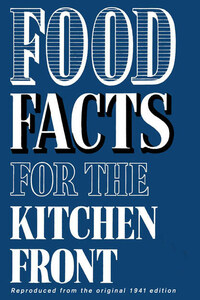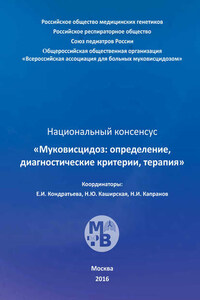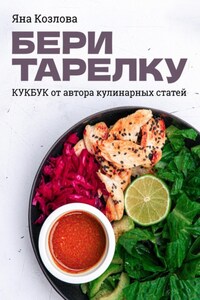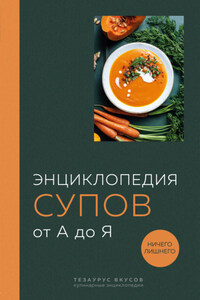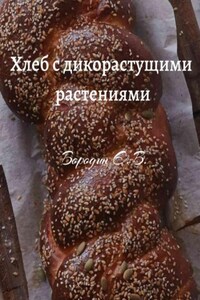Food Facts for the
Kitchen Front
Filled with no-nonsense war-time recipes, using pure ingredients and simple preparation methods.
Includes valuable information on food groupings and food factors, vital for a healthy and balanced diet.
ONE result of war-time feeding is that we all know something about food values. We have learnt that the foods necessary to health fall into three groups: Energy Foods, Body-building Foods, and Protective Foods.
Let us examine them briefly, with special attention to the foods that are always plentiful. Then we shall see how to eat well-balanced meals that will keep us fit.
Our appetite guides us to eat these foods. We need not plan for Energy Foods in our meals. When we are hungry we naturally want to eat starchy foods, fats and sugar.
Starchy Foods.—Potatoes, Bread and Cereals of all kinds satisfy our hunger and are in good supply.
Fats.—Butter, Margarine, Dripping, Bacon, etc., are still sufficient for our health. We shall not suffer in any way from eating rather less fat than formerly, provided that we eat more green vegetables.
Sugar.—Sugar, dried fruits, honey, jam and confectionery are valuable, but we should not exaggerate their importance. When we talk about “needing sugar for energy” we are inclined to overstate the case. Potatoes and bread will provide all the energy we want.
GROUP TWO—BODY-BUILDING FOODS
These, repairing the tissues, are particularly important for growing children. The main foods in this group are:
Meat, Fish, Eggs, Cheese and Milk.
We have a second line of defence in other more plentiful foods which have body-building value. They are:
Oatmeal.
Wheatmeal Bread and Flour.
Dried Peas, Beans and Lentils.
Potatoes.
Green Vegetables.
GROUP THREE—PROTECTIVE FOODS
We have never eaten enough protective foods. Even in peace-time doctors have urged us to eat more of them. They guard us against infection; they help us to fight tiredness and depression, they keep our complexions clear. Their vitamins and essential mineral salts are indispensable in our daily diet.
It is extremely fortunate that, placed high in this group, there should be some of the foods that are plentiful throughout the year:
Wheatmeal Bread, Oatmeal, Milk, Potatoes, Carrots, Green Vegetables (fresh or canned), Root Vegetables and Raw Salads.
In these days, when we are all beginning to concern ourselves with essentials and to discard the things that do not matter, it is necessary to remember these two facts:
1. What we can get is good for us.
2. A great deal of what we cannot get is quite unimportant.
THOUGH we cannot expect to become scientific experts overnight, it is useful for us to learn something about calories, proteins, vitamins and mineral salts. We ought to know what they are and what they do to our bodies.
Calories are units of heat, which we liberate in our body-tissues when we eat Energy Foods (Starches, Fats and Sugar). Our daily caloric requirement varies according to our sex and occupation. Men need more calories than women do. People whose work calls for great physical activity need more calories than are required by sedentary workers.
Food is a mixture of chemical substances, and the chemical constituent known as protein builds our muscles and tissues. Proteins are therefore particularly important to growing children.
Animal proteins are derived from the main body-building foods: Meat, Fish, Eggs, Milk and Cheese. Vegetable proteins are obtained from our “second line of defence”:
Oatmeal.
Wheatmeal Bread.
Potatoes.
Green Vegetables.
Dried Peas, Beans and Lentils.
Vitamins are food factors necessary to growth and nourishment.
Their existence was discovered when scientific research proved that artificial food mixtures (containing all the known nutritive factors in a purified state) were unable to support growth without the addition of a natural food, such as milk.
It was obvious then that natural foods must contain unknown essential food factors. These are now known as vitamins. The most important are Vitamins A, B and C.
Vitamin A plays an important part in building up our resistance to infection. It is essential for the adapting of the eye to sudden changes of light. “Night blindness” may be due to a deficiency of Vitamin A.
Good sources of this vitamin are Spinach, Carrots, Cabbage, Peas and Beans. Halibut liver oil and Cod liver oil, Herrings, Margarine.
Vitamin B is essential for the correct functioning of the nervous system, which influences our digestive system.
Good sources of the vitamin are Wheatmeal Bread and Flour, Oatmeal, Vegetable Extract.
Vitamin C maintains the correct structure of the tissue of the blood-vessels. Complete absence of this vitamin from the diet leads to scurvy.
Good sources of the vitamin are Potatoes, Green Vegetables (especially raw), Root Vegetables (especially raw) and Fruit.
